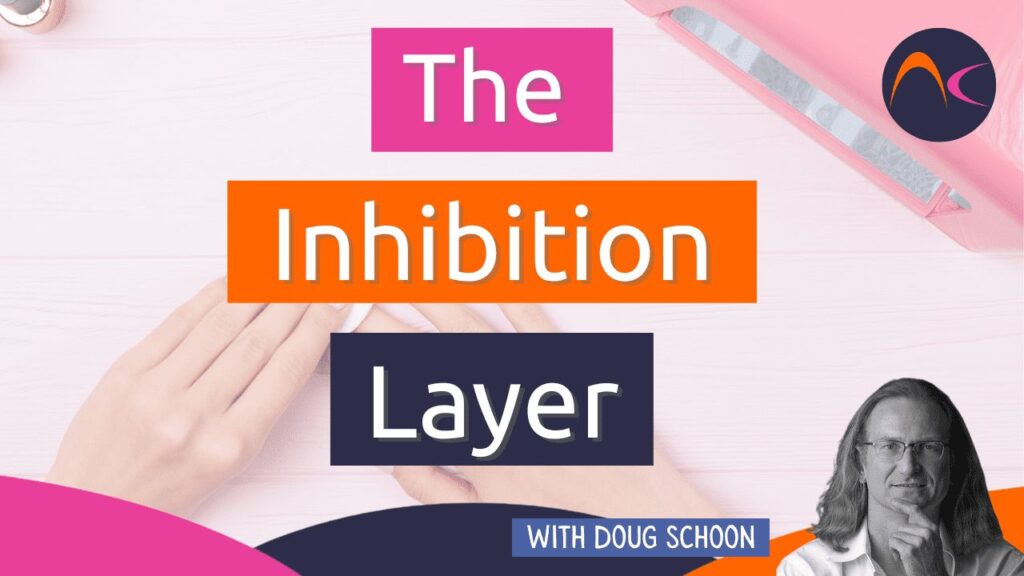Every time we cure a UV gel nail coating, we are left with a sticky top layer or a top film. That is properly called the “inhibition layer”, and is formed because of oxygen. When oxygen is present, it blocks the ends of the growing polymer chains to prevent or “inhibit” these chains from becoming any longer. This is sometimes incorrectly called the “dispersion layer”, but that term refers to how oils spread out over the surface of water or concrete pavement and is not a correct way to describe this sticky layer.
Rather than growing long enough to cause the UV gel to harden, these shortened chains remain in a semi-hardened form that is easily removed from the surface of the hardened gel layer that is underneath it. This happens because the lack of oxygen at deeper levels allows this lower layer to cure and harden. Faster curing UV gels usually have a thinner inhibition layer, while slower curing UV gels can have a thicker layer. This happens because faster curing UV gel will harden before oxygen has time to block the chains and prevent them from growing.
It is important to understand that if the nail lamp emits too little UV or emits UV of the incorrect wavelength range, curing will be slower and the inhibition layer will become thicker. If the UV bulbs in the nail lamp need to be changed, this will also create a thicker layer as well. The inhibition layer of a properly cured UV gel nail is 25% or less of the total applied layers. If the inhibition layer is thicker, let’s say 50% of the total applied product, then that would be an excessive amount. Assuming that you are using the nail lamp recommended by the manufacturer of the UV gel, I’d recommend changing your bulbs, especially if they haven’t been changed in a few months and the nail lamp is used regularly.
Make sure you’re using the correct UV bulbs for your nail lamp. The UV bulbs may look the same, but bulbs from different manufacturers can vary significantly. The range of wavelengths and the intensity of the UV could be much lower than what is needed for a proper cure. Low-quality UV bulbs break down/degrade much more quickly than high-quality bulbs and will need to be changed more often It is wise to only use the UV bulbs recommended by the manufacturer of the UV gel in order to help ensure proper cure. Look at the part number printed on the UV bulb to ensure you’re re-ordering the proper replacement.
Dirty or gel-coated UV bulbs will not properly cure the nail coating so make sure to avoid this by cleaning your bulbs often. Bulbs contaminated with cured gel can be turned over “ONCE”. Be sure to warn clients NOT to allow their nails to touch the bulbs or the LED diodes/bulbs in a UV nail lamp since this can drastically lower their effectiveness. The same is true for the reflective material inside the nail lamp. Make sure it is clean and not coated with cured UV gel. If the reflecting material is dirty or in poor condition, this can also affect curing.
Improper placement of the hands in the lamp can also lead to an improper cure and may create thicker inhibition layers. This layer will thicken even if repeatedly pulling hands out of the nail lamp, which is not a proper cure. The hands aren’t exposed to the correct amount of UV. These are the main factors that can contribute to excessive inhibition layers. If you notice this layer becoming thicker than normal, use the mentioned tips to find out why and correct the situation.
Under-cured UV gels are a leading cause of adverse skin reactions for nail technicians since they are repeatedly exposed to dust and filings. So don’t ignore the problem when excessively thick inhibition layers begin to form. Find out why and fix the issue. Don’t forget to take appropriate care to avoid contact with the inhibition layer; prolonged or repeated contact with this layer can also lead to adverse skin reactions.


